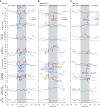Ventilator Sharing during an Acute Shortage Caused by the COVID-19 Pandemic
- PMID: 32515988
- PMCID: PMC7427377
- DOI: 10.1164/rccm.202005-1586LE
Ventilator Sharing during an Acute Shortage Caused by the COVID-19 Pandemic
Figures

Comment in
-
Ventilator Sharing during Shortages. A Siren's Song?Am J Respir Crit Care Med. 2020 Aug 15;202(4):490-491. doi: 10.1164/rccm.202006-2438ED. Am J Respir Crit Care Med. 2020. PMID: 32610021 Free PMC article. No abstract available.
-
In-Parallel Ventilator Sharing during an Acute Shortage: Too Much Risk for a Wider Uptake.Am J Respir Crit Care Med. 2020 Nov 1;202(9):1316-1317. doi: 10.1164/rccm.202006-2420LE. Am J Respir Crit Care Med. 2020. PMID: 32744454 Free PMC article. No abstract available.
-
Ventilator Sharing Using Volume-controlled Ventilation during the COVID-19 Pandemic.Am J Respir Crit Care Med. 2020 Nov 1;202(9):1317-1319. doi: 10.1164/rccm.202006-2452LE. Am J Respir Crit Care Med. 2020. PMID: 32744456 Free PMC article. No abstract available.
-
Reply to Chase et al. and to Milner et al.Am J Respir Crit Care Med. 2020 Nov 1;202(9):1319-1320. doi: 10.1164/rccm.202007-2959LE. Am J Respir Crit Care Med. 2020. PMID: 32744458 Free PMC article. No abstract available.
References
-
- Feuer A, Rosenthal BM.Coronavirus in N.Y.: ‘astronomical’ surge leads to quarantine warning New York Times 2020 [created 2020 Mar 24; accessed 2020 Mar 24]. Available from: https://www.nytimes.com/2020/03/24/nyregion/coronavirus-new-york-apex-an...
-
- Cuomo A.New York State governor’s daily coronavirus press briefing 2020[created 2020 Mar 29; accessed 2020 Mar 29]. Available from: https://www.governor.ny.gov/news/amid-ongoing-covid-19-pandemic-governor...
-
- Amato MBP, Meade MO, Slutsky AS, Brochard L, Costa ELV, Schoenfeld DA, et al. Driving pressure and survival in the acute respiratory distress syndrome. N Engl J Med. 2015;372:747–755. - PubMed
-
- Branson RD, Blakeman TC, Robinson BR, Johannigman JA. Use of a single ventilator to support 4 patients: laboratory evaluation of a limited concept. Respir Care. 2012;57:399–403. - PubMed
Publication types
MeSH terms
Grants and funding
LinkOut - more resources
Full Text Sources
Other Literature Sources

